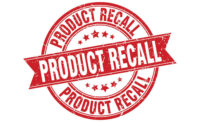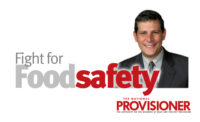Can anyone really guarantee that your products will never be implicated in a recall? For most raw beef processors, the response has consistently been that, in the absence of a validated intervention such as high-pressure processing or irradiation, such a statement was impossible.
Interestingly, however, processors may have more control than they think. Increasingly, the existence of positive regulatory findings on the one hand and outbreaks on the other are being linked objectively to identifiable events occurring in slaughter plants themselves.
Indeed, FSIS believes there is a direct correlation between hot days or high event periods (HEPs) in harvest facilities and E. coliO157:H7 findings. A high event period is a period during which the number of beef combos in a slaughter facility that test positive for E. coliO157:H7 is higher than expected, and thus may be a signal of a food-safety failure and product cross-contamination.
As a result, in recent guidance documents, FSIS has urged slaughter facilities to develop, implement and then closely follow a HEP program. In essence, these programs require slaughter facilities to take certain actions when their E. coliO157:H7 (or, non-O157:H7 STEC) findings exceed a certain threshold. Such actions can include retesting all negative product, or diverting all potentially affected trim to a renderer or validated cook facility.
Rather than just relying on FSIS to urge slaughter facilities to develop and follow HEP programs, processors should actually mandate that their suppliers adopt them. This way, if your supplier has an issue, you can ensure that its issue does not become your own. In turn, such requirements can and should be built wherever possible into your supplier specifications. Given what science has demonstrated, requiring your suppliers to respond appropriately to a HEP pursuant to established procedures will likely decrease your risk of being drawn into a recall substantially.
Finally, the analysis does not necessarily end there. Whenever a slaughter facility has an O157:H7 positive (whether operating under a HEP program or not), that facility should be urged to identify and divert any associated product. Put another way, if contamination exists in one lot, the flanking lots which test negative might be diverted as well. This is because, if E. coli exists in one lot, it may also be present at undetectable levels in adjoining lots as well.
So, what’s hot — and what’s not? Well, by casting a much wider net and diverting all potentially affected product in the event of a positive finding, the risk of any contamination leaving the facility undetected (and the chance of a future recall) can be reduced substantially as well.





Report Abusive Comment